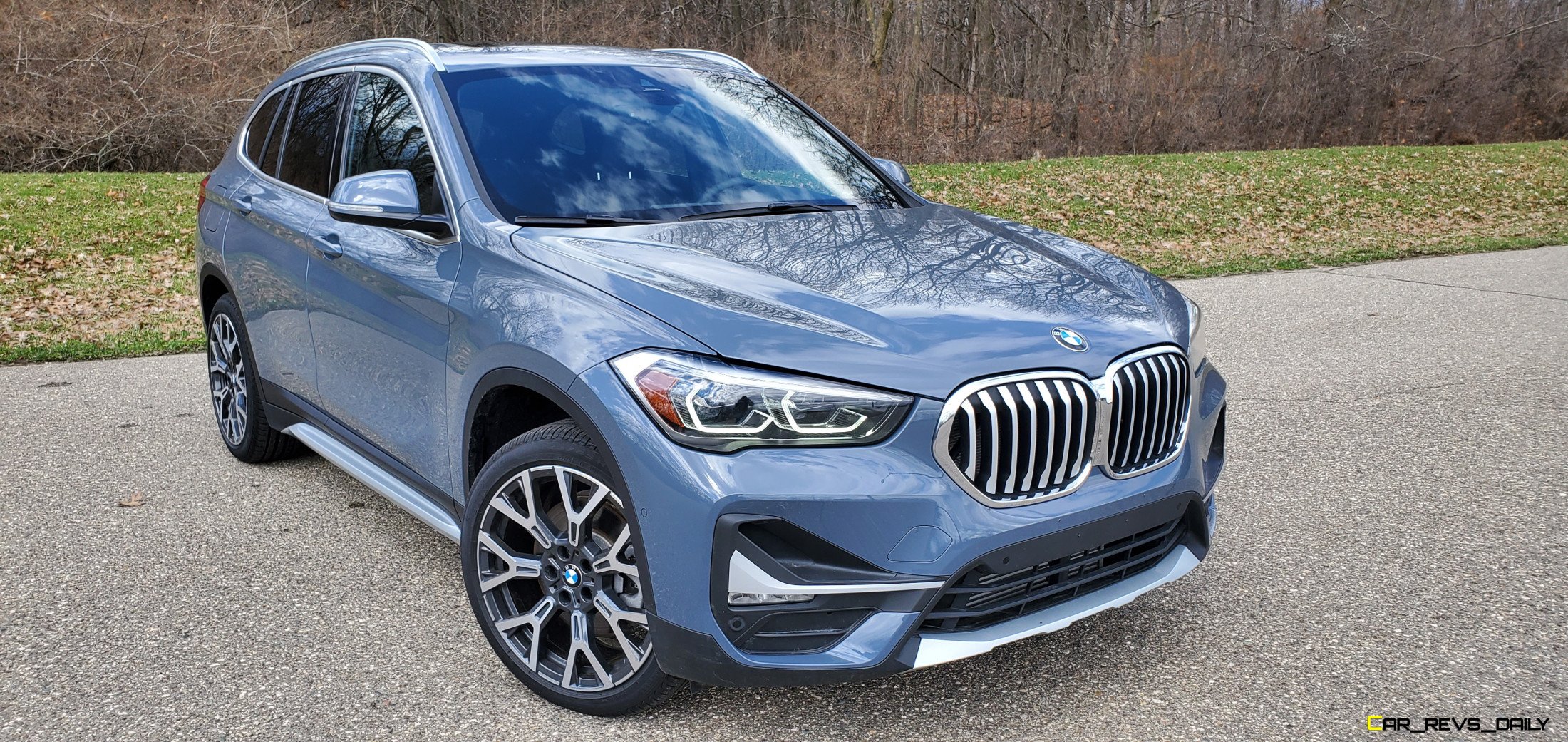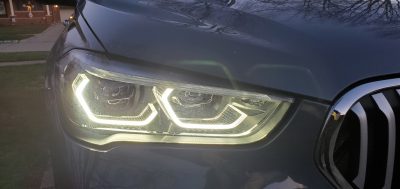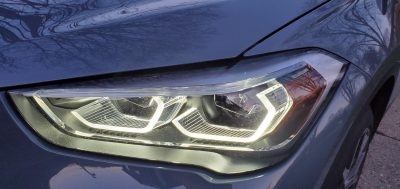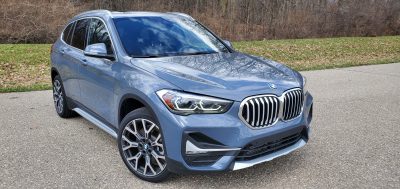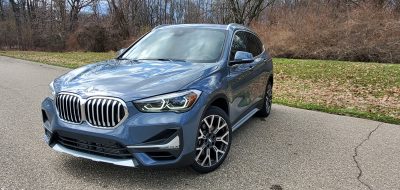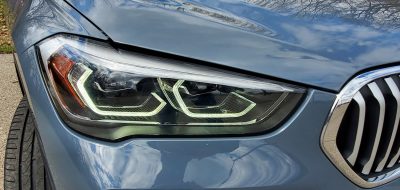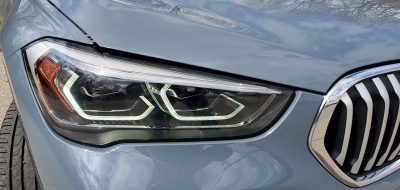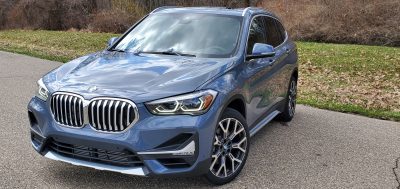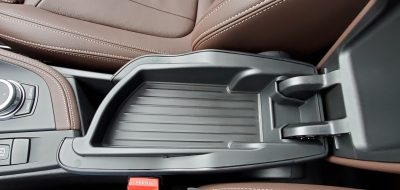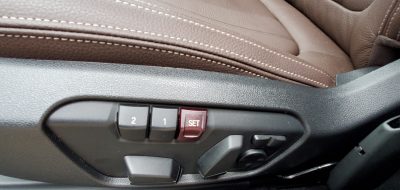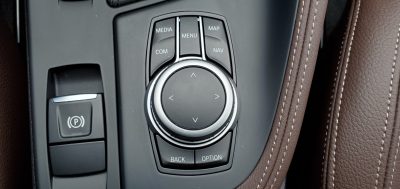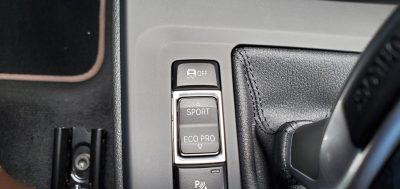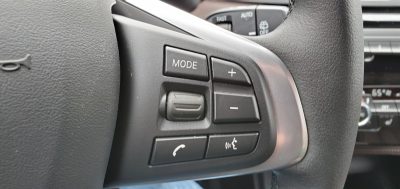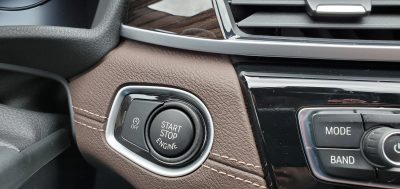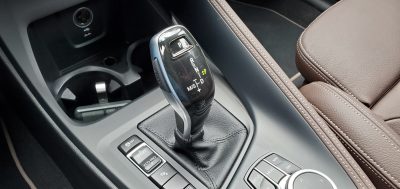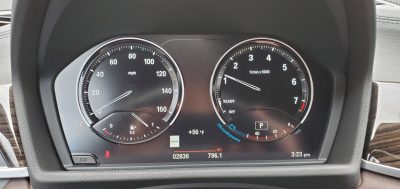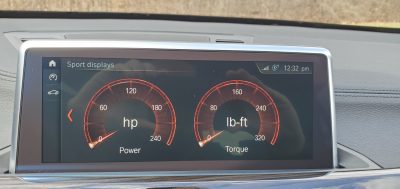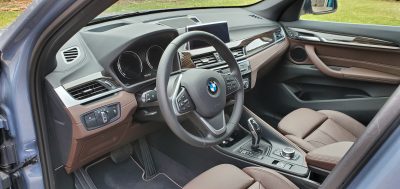The 2020 BMW X1 has often been a model that has largely preferred to lurk behind the scenes. While the bigger X3, X5, and even the X7 hog the bulk of the spotlight, the X1 has performed its duties as a entry level model without as much as a whimper. But BMW is always eager to shake things up to try and keep their models fresh in the rapidly evolving SUV/CUV sales race, and the 2020 X1 is no exception. BMW has made some subtle but noticeable updates to the tiniest member of the X family for 2020. But do they help the X1 finally get a slice of the spotlight that it so rightfully deserves? Or is it not enough to help it stand out from rivals?
Subtle Evolution Versus Outright Revolution:
In the case of the exterior styling, BMW opted for a more subtle evolution for 2020 versus an all out reboot. The core DNA here is mostly unchanged from the 2019 model, but bigger twin kidney grilles are arguably the most prominent changes that one can find on the front fascia. BMW has stated in the past that the growing front grilles are a consequence of evolving safety requirements, which in turn force designers to make concessions to help them integrate the safety equipment into a model. In the case of BMW, the growth of these grilles has certainly produced mixed results depending on the model that they are equipped too. While the flagship 8-Series manages to pull it off very well, here on the X1 the twin kidneys look a bit awkward, and they clash with the rest of the front fascia’s sport focused personality. It’s a shame, since the revised front bumper and headlights look solid, and are a marked improvement over the older units. The side profile of the X1 retains the same squarish look that defines the bigger X3 and X5, but new wheels adds a subtle pinch of flair especially when certain choices are equipped. The rear fascia follows the BMW playbook right to the letter, and we like the sport focused tail lights as well as the tidy dual exhaust tips. The Storm Bay Metallic paint on our tester looked handsome, but buyers looking for more of a visual statement should opt for some of the darker hues that the X1 has in its color pallet, especially red, black, and blue.
When compared to rivals like the Audi Q3, Cadillac XT4, and the Lexus UX, we think that the BMW holds a distinct edge in the looks department with a motif that is very sleek and modern, but without resorting to too much futurism. The Volvo XC40 has a simpler canvas, but the front and rear fascia lack cohesion, and it can look rather clumsy from select angles. With a strong preference towards evolution versus shaking the system, BMW is keen on making sure that the X1 continues to be a familiar face for the 2020 model year. It will be interesting to see what the next generation model will bring, especially in regards to the front fascia design.
Functionally Luxurious Interior Marred By Subtle Flaws:
With BMW designers choosing to take it light with the exterior, the interior aims to provide more luxury to occupants. The old 6.5 inch screen for the iDrive operated infotainment system is replaced with a bigger 8.8 inch unit that features standard navigation. The bulk of the cabin itself features premium materials, and BMW interior designers added more leather accents to help spruce things up a bit. These new additions can be found in the dashboard area, as well as the optional leather adorned seats. However, look beyond the obvious eye candy, and there are some instances where BMW’s bean counters decided to add their own touches to things, The glove box door for example feels out about as flimsy as a children’s lunchbox, and the useful center bin has plastics that look more at home at a Dollar General fire sale.
All that aside, we are glad to see that the rest of the cabin retains a sport focused mission, and encourages the driver to focus on the road ahead. The driver faces a set of very business looking gauges that are very readable with many functions easy to see at a glance. The driving position is good for the most part, but we would have liked to see more adjustments for angle especially for taller drivers. The seats in our tester were comfortable places to spend time in, but we wished that there was more upper back support especially since the X1 is supposed to be one of the more dynamically exciting entries in the compact luxury CUV segment. The infotainment system is fairly easy to operate, and the latest iDrive interface does a good job of being a very intuitive operating system, with minimal amounts of lag between loading various inputs. The system is arguably the biggest gem in the entire presentation, but do be wary of using the optional digital gauges that come with Sport mode. While they do bring a sportier flavor with the additional information they provide, the layout hijacks the main screen, and as a result, you have to turn them off in order to use the map or other features. Apple CarPlay is available on the X1, but Android Auto has not made the jump to iDrive just yet, so folks that own Android equipped phones will be out of luck in terms of full cellphone synchronization.
Buyers looking to use the X1 as a cargo hauler will be pleased with the amount of room that is on hand. The space is fully carpeted and even comes with tasteful chrome accents. While the rear has enough room for a days worth of groceries with the seats up, bulkier cargo (like a free tricycle we picked up in our neighborhood) will require you to fold them down to help these particular items formally fit inside.
Spirited Performance For Any Occasion:
Performance for the 2020 BMW X1 is sprightly for any occasion, with a 2.0 liter turbocharged four cylinder engine being the sole offering available. But don’t mistake it for being weak, with the well traveled 2.0 liter making a very respectable 228 horsepower. This allowed our all-wheel drive tester to make the sprint to 60 mph in 6.3 seconds which is very respectable for a small CUV. The turbo four is spunky, and provides plenty of pep especially when allowed to fully indulge in its performance focused urges in Sport mode. The eight speed automatic is a smooth operator, and it did a good job delivering smooth creamy shifts no matter what we threw at the X1 during its stay with us. Our tester of course is not an M model, but for buyers looking to have a bit more caffeine in their automotive espresso without going overboard with the milk and cream, we think that the standard X1 is a decent option.
Handling in our tester is clearly more sports car than utility vehicle, with the X1 featuring a relatively stiff ride. This allowed our tester to have good amounts of handling and poise in the corners, but it also meant that nastier sections of bumpy roads produced back jarring sensations which are muted better in some of its rivals. The electrically assisted steering allows the X1 to easily navigate tight urban commutes, but buyers longing for the tactile feedback that defined older BMW hydraulic steering setups will not find it here. While the steering wheel does fit easily into the hands, it also does not provide enough feedback to make it a very communicable unit. It is a sacrifice that the bulk of BMW owners will most likely not notice, but weekend warrior types will indeed notice the absence of this key trait after prolonged exposure. Braking is very composed, with our tester producing smooth drama free stops from a wide variety of speeds.
Value Quotient:
Pricing for the 2020 BMW X1 is firmly in the same territory that is populated by others in its segment, with the base front wheel drive X1 starting at $35,200. Our xDrive equipped example had a slightly higher base sticker of $37,200, but a generous list of options (including the $4,950 Premium package) helped push the grand total to $48,645. That is just under $50,000, and it is richer than the $42,450 price offered by the Volvo XC40 in range topping Inscription guise. The Bimmer also manages to be pricier than the Audi Q3 but it is a compelling alternative to the Mercedes-Benz GLA which can rapidly eclipse the X1 in price when equipped with a healthy selection of options.
If we were to formally build an X1 for ourselves, we would stick with the front wheel drive version, and also opt for the M Sport Package due to the seats having more sculpting and support than the default sport seats, as well as the stylish monochrome appearance that comes bundled in. The $4,950 Premium Package brings plenty of luxury touches and frills to the X1, but we would most likely leave it out to help create wiggle room for the $900 optional 19-inch wheels and the $200 Parking Assistant feature.
Overall, the 2020 BMW X1 continues to be an excellent entry level model for BMW. While the world will have to wait until the next generation X1 to see how far BMW goes in revolutionizing the styling, we think that the subtle evolution that is on display here with the current model will certainly do a good job of drawing in new buyers, while also potentially stealing away a few buyers from rivals. With the segment becoming more and more of a battleground, BMW will need all the tricks it has in its playbook to keep the spunky X1 fresh in the minds of buyers.

Carl Malek has been an automotive journalist for over 10 years. First starting out as a freelance photographer before making the transition to writing during college, his work has appeared on numerous automotive forums as well as websites such as Autoshopper.com.
Carl is also a big fan of British vehicles with the bulk of his devotion going to the Morgan Motor Company as well as offerings from Lotus, MG, and Caterham. When he is not writing about automobiles, Carl enjoys spending time with his family and friends in the Metro Detroit area, as well as spending time with his adorable pets.

